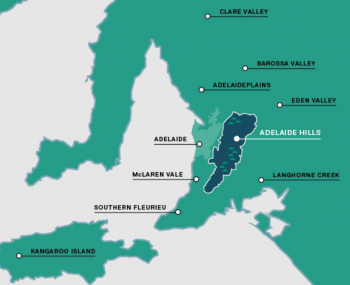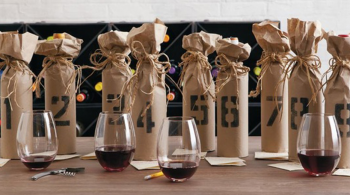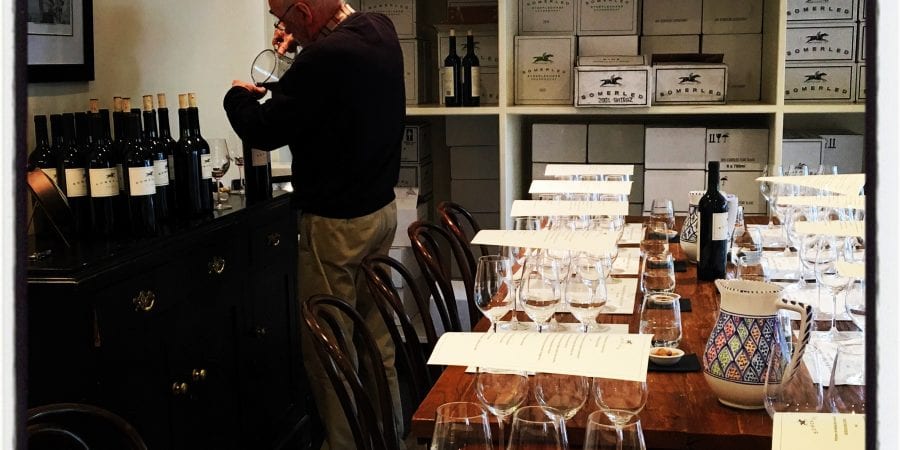WARNING: This post contains some shameless Somerled promotion…
… but I promise you’ll learn some interesting things along the way!
We have some amazing events coming up at Somerled (but in the interests of keeping this blog true to its aim I’ll refrain from giving you the links till the very end!). Probably the most exciting of these are Rob’s long table tastings.
Anyone who has attended one of these in the past will tell you they are not to be missed. But of course, not all of you are able to make the trip to Hahndorf to spend a few intimate hours with Rob as he takes you through back vintages of his Chardonnay and Shiraz.
So, it got me thinking about the types of tasting you can do at home (and of course we have something to help you with that as well, but we’ll talk about that later!). You might not have Rob, but there’s nothing stopping you from having an entertaining and educational tasting at your own dining room table with family and friends.
Types of tastings
Vertical tasting
In a vertical tasting, all the wines come from one selected winery (a lovely little family owned winery in Hahndorf perhaps?). It aims to compare different vintages of the same wine variety and type. This type of tasting allows you to see how the growing environment affects the vineyard and the grapes it produces year to year. It’s helpful to have an insight into what specific environmental events occurred from year to year (frosts, drought, heatwaves etc.). This may help to understand the differences observed between vintages.
So, you know what I’m going to say… it’s super handy to have the winemaker at your disposal during this type of tasting. Or at least a detailed set of tasting and vintage notes…
Horizontal tasting
 In a horizontal tasting, the wines are from the same vintage but from different wineries. Keeping both the wine variety AND the wine region the same enables tasters to identify differences in winery styles more easily. It can also highlight differences within regions. Take the Adelaide Hills for example – our region stretches 70km, with some sites sitting at around 650m above sea level. It’s not surprising that there may be significant differences between wines produced at the very edge of the region (almost McLaren Vale territory) than those produced at those higher altitudes.
In a horizontal tasting, the wines are from the same vintage but from different wineries. Keeping both the wine variety AND the wine region the same enables tasters to identify differences in winery styles more easily. It can also highlight differences within regions. Take the Adelaide Hills for example – our region stretches 70km, with some sites sitting at around 650m above sea level. It’s not surprising that there may be significant differences between wines produced at the very edge of the region (almost McLaren Vale territory) than those produced at those higher altitudes.
Another interesting horizontal tasting is one which compares wines of the same varietal and vintage from different countries.
Blind tasting
 This is where things start to get very interesting… and difficult (and usually lead to spirited conversations across the table)!
This is where things start to get very interesting… and difficult (and usually lead to spirited conversations across the table)!
In a blind tasting, everything about the wine is concealed from the taster. Usually, the bottles are wrapped in paper bags or aluminium foil and labelled only with a number. Ideally, the shape of the bottles should also be a mystery as this can sometimes give away clues about the variety.
The idea is for participants to identify the variety, region, and vintage.
You might think this is an impossible task, but I’ve done some scouring of the internet and found that WineFolly.com have come up with some hints and tricks that will help you identify certain varieties (not always, but most of the time). For example…
Merlot: Merlot is very confusing because it often tastes and smells like young Cabernet Sauvignon and Cabernet Franc. Merlot’s ‘tell’ is that it has a slightly orange rim at a young age whereas Cabernet Sauvignon does not.
Check out all their handy tips here.
The best rule of thumb with a tasting like this is to keep the wines to single, relatively well-known varieties. Avoid blends. That’s if you want your friends to talk to you after the tasting.
Wine options game
Much like a blind tasting, pretty much everything about the wine in a wine options game is unknown to the tasters. However, participants are given a list of questions with multiple choice answers. For example…
- Is the wine Shiraz or Cabernet?
- Does the wine come from the Adelaide Hills or Barossa?
The idea is to “knock-out” participants as the game progresses leaving one overall winner. It’s a great thing to do with a big group.
Wine tasting etiquette…
… or a couple of things to remember when attending or hosting your own tasting.
To spit or not to spit?
It doesn’t take much to figure out that the more wine you taste (and swallow!), the harder it is to taste and observe the differences.
Hey, I’m not telling you that you should spit out all that deliciousness during a tasting but spitting does have its merits. Here is a couple for you to read (and probably ignore!)…
- Evaluating the later wines will be difficult if you swallow the earlier ones. The alcohol you consume will cloud your judgment.
- Swallowing isn’t really necessary in order to taste the wine fully. If you leave the wine in your mouth for eight to ten seconds, you’ll be able to taste it thoroughly — without having to worry about the effects of the alcohol.
- If you’re driving to the tasting… look, I’m not going to lecture you on this one. We all know the risks.
- Spitting makes it look like you know what you’re doing (I just made that one up!)
If (like me) you know that you can’t bring yourself to spit, be sure to have something substantial to eat before going to a wine tasting. You absorb alcohol more slowly on a full stomach.
Aroma
Because smell is such an important aspect of wine tasting (up to 80% of the experience if you remember this post), it’s really important to not interfere with your (and other tasters’) ability to smell. This means…
- Smoking (anything) is a complete no-no at any wine tasting.
- Using any scent (perfume, after-shave, strong smelling hair spray, etc.) isn’t a good idea. These extraneous odours can really interfere with the wine’s aroma.
BLATANT EVENT PROMOTION
If doing a vertical tasting with Rob sounds like fun, then grab your tickets now. We have three to chose from…
Or do it all at home…
Take part from home with a Museum Pack including signed Tasting Notes for the occasion from Rob!
Choose from…
Shiraz Museum Pack – features Shiraz 2010 x 1, 2012 x 1, 2013 x 1, 2014 x 2, Pre-release 2015 x 1
or
Shiraz & Chardonnay Museum Pack – Features Shiraz 2010 x 1, Shiraz 2013 x 1, Shiraz 2014 x 1 (current vintage)
and Chardonnay 2013 x 1, Chardonnay 2014 x 1, Chardonnay 2015
